Battle of Spioenkop

|
Visit to the Battlefield of Spioenkop (or Spion
Kop)  After a very tasty lunch we headed toward Spioenkop
(the word “spioen” in
Afrikaans means “spy” or “look-out”, and “kop” means “hill” or
“outcropping”), a view along the way.
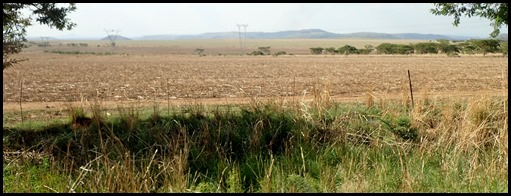 About ten miles I thought, until the
Wicked Witch with the surprisingly nice voice, took us along an unsealed road –
and my, was it unsealed. We bumped along between farm
fields for half an hour and eventually arrived at the gate at
four-thirty.
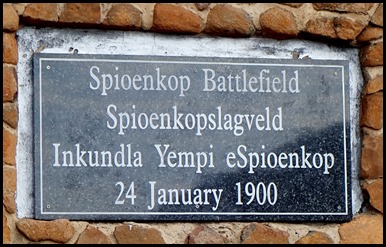 The wall
plaque beside the main gate. The lovely man at the gate was concerned
that the Battlefield Memorial closed at five but I promised faithfully we would
be on time and that our visit was all for Joe (son) who is such a massive
Liverpool supporter that his son has the initials KOP. He laughed as I leapt out
of the car when I saw inside his gatehouse.......
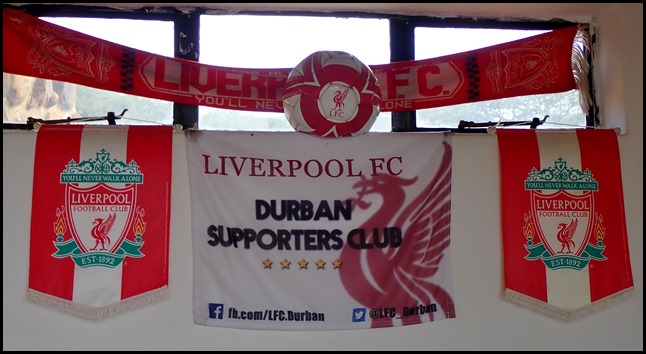 .......did not expect to see this.
Liverpool memorabilia..... Quote from This is Anfield: The claim is that survivors from that battle ended up
christening the new stand at Anfield, built in 1906, Spion Kop in memory of
their fallen comrades. Even today, the origins of that name and the true nature of where
it came from can be heard on the terraces, with the Kop singing ‘Poor Scouser
Tommy’ with regularity; though the song doesn’t refer directly to that battle,
it speaks of a fallen soldier and a Liverpudlian who comes from the Spion
Kop.
The first recorded reference to a sports terrace as "Kop" related to Woolwich Arsenal’s Manor Ground in 1904. A local newsman likened the silhouette of fans standing on a newly raised bank of earth to soldiers standing atop the hill at the Battle of Spion Kop. Two years later in 1906, Liverpool Echo sports editor Ernest Edwards noted of a new open-air embankment at Anfield: "This huge wall of earth has been termed 'Spion Kop', and no doubt this apt name will always be used in future in referring to this spot". The use of the name was given formal recognition in 1928 upon construction of a roof. Many other English football clubs and some rugby league clubs use the word ‘kop’. Villa Park’s old Holte End was historically the largest of all Kop ends, closely followed by the old South Bank at Molineux, both once regularly holding crowds in excess of 30,000. However, in the mid-1980s work was completed on Hillsborough’s Kop which, with a capacity of around 22,000, became the largest roofed terrace in Europe. Liverpool's Spion Kop was closed and demolished in 1994 (to comply with requirements of the Taylor Report), which made all-seater stadiums obligatory in the highest two divisions of English football. A new Spion Kop was built in its place with 12,390 seats. 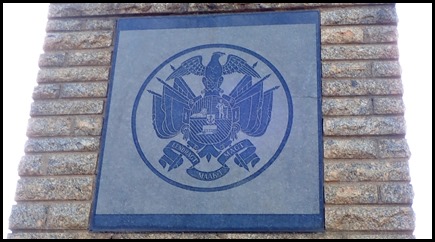 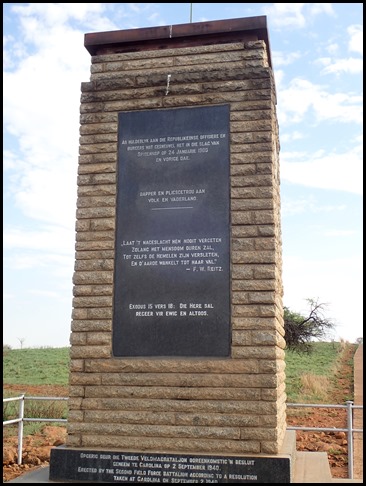 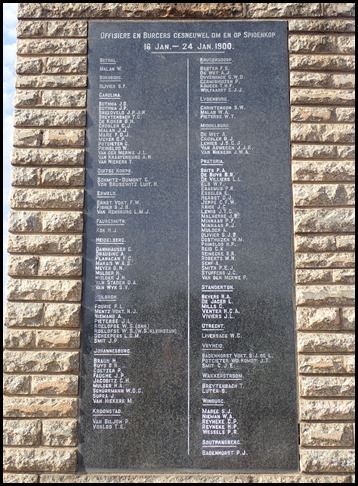 We bumped over speed/drainage ridges
going up a steep hill. Bear stopped below the first memorial
- African and headed for the car park. I ran up a slope to photograph
pressed for time.
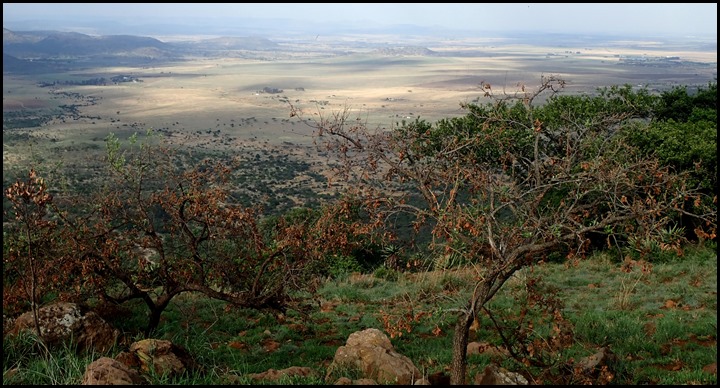 The view from the
top.......
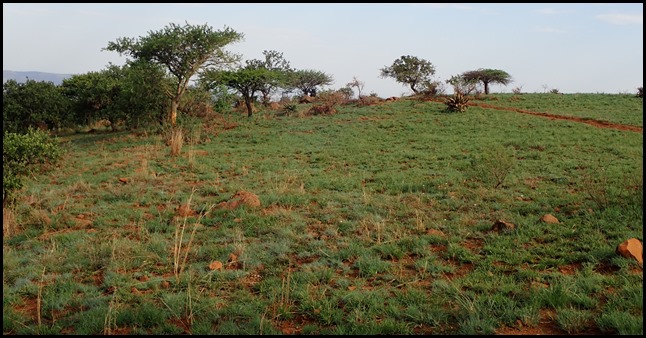 ......and where much of the battle occurred.
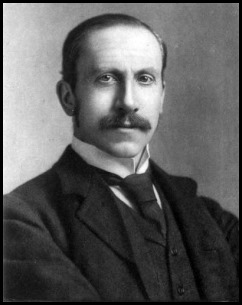 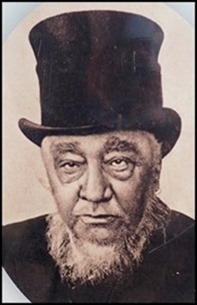 The Anglo Boer
War: Britain had for a time, in the latter 19th century, tried to gain
control over the Zulu Afrikaansche Republiek (ZAR). When Sir
Alfred Milner became governor of the Cape Colony and High Commissioner
for South Africa the policy of aggressive imperialism was intensified.
President Paul
Kruger was determined to preserve the independence of the ZAR, but had in
negotiations with the British made several concessions. ZAR/British relations
deteriorated and eventually war broke out between Britain and the Boer Republics
on the 11th of October 1899.
 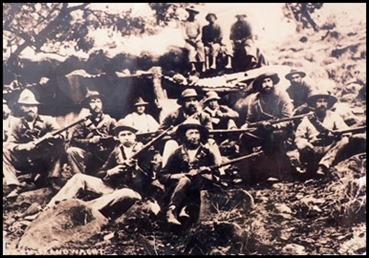 British troops disembarking at Durban and Boer commandos arming themselves.
Our map
and information sheet describes this battle as “the most futile and bloodiest of
the five battles fought in an effort to relieve Ladysmith and Bergville”.
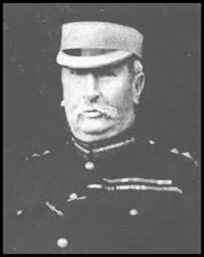  Boer troops moved
into the British Colony of Natal and laid siege to
Ladysmith, where large numbers of British forces were stationed. The Boers, in
response to the arrival of thousands of British troops in Durban, took up
positions along the Thukela River near Colenso. On the 15th of December 1899 a
British force of 19,400 men under Sir Redvers
Buller, suffered a humiliating defeat. A Boer force of 4,500 under General Louis
Botha took up positions along the Thukela River near Colenso and repulsed
Buller’s force, causing 1,000 British casualties.
 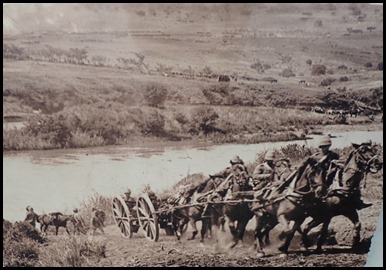 On the 10th of January 1900, with a force swelled to
24,000 men, Buller moved to the upper Thukela near Spioenkop. His
second-in-command, Lt.Gen. Sir Charles Warren, under
orders, crossed the Thukela with 15,000 men on the
17th of January 1900, but they were repulsed by 2,000 Boers on iNtabamnyama.
Warren then decided to attack Spioenkop, the highest point on the Boer defense
line.
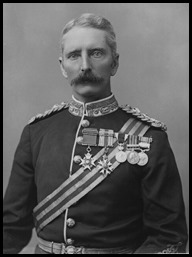 Warren decided to capture
Spioenkop with a surprise, night attack. A force of 1,700 under Major General Edward Woodgate departed under drizzling,
pitch dark conditions at 21:00 on the 23rd of January 1900 and climbed a spur
from the south west.
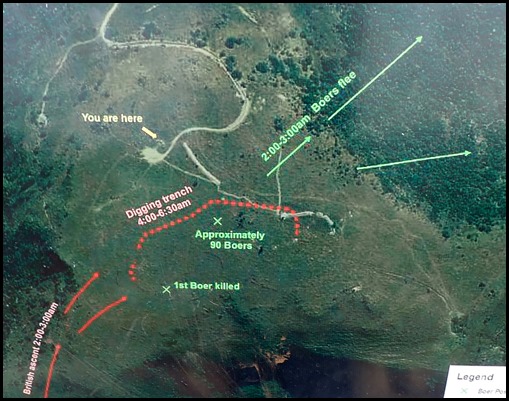 By 02:00
they reached the last plateau leading to the summit
(bottom left of the map). The summit of Spioenkop was at the time
occupied by a force of about 100 Boers.When the British reached the top they halted and fixed bayonets.
The men then advanced in lines. As the British approached this area a loud
challenge from the Boer watch, followed by rifle fire issued out of the
darkness.
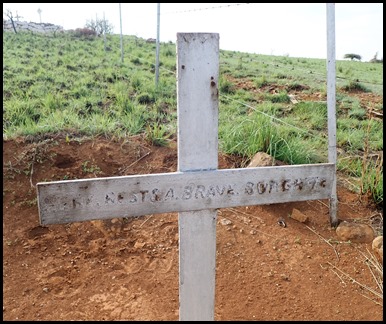 As the Boers reloaded, the
British charged and bayoneted one of the Boers (place marked with a simple cross). The remaining Boers fled
the summit via the north eastern slopes and raised the alarm in the Boer
encampments below. It appeared that the summit had been captured at little cost
to the British.
 After gaining control of the
summit, Woodgate gave instructions for the hill to be fortified, and a shallow
trench and breastworks were constructed. (It is said that there
were only twenty shovels and an equal number of picks in use as a thousand
soldiers stood by). The trench faced north and was about four hundred metres
in length and probably no deeper than forty centimetres. The stones and soil
from the trench were formed into a low wall. The breastwork formed the extreme
left of the British position. By 06:30 the trench was complete and the men
rested, waiting for the mist to lift. The field of fire from this part
of the trench was good. What remains of this part of
the trench.
Once General Botha became aware
of the British success he gave orders for the Boers to occupy the surrounding
slightly lower hills, he believed that Spioenkop was defensible from these
positions, and it was for this reason that he had in the first place positioned
only a few men on the summit. 400 men were ordered to climb the steep north-east
slopes and attack the British on the summit. They would be supported by rifle
fire from the surrounding hills and seven field guns placed at strategic
positions around Spioenkop. These preparations occured under cover of darkness
and the thick mist.
 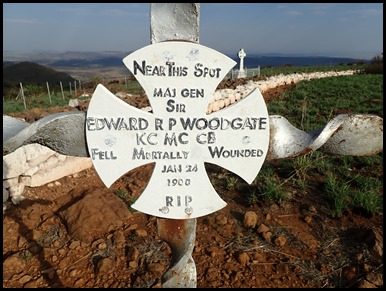 The Battle of
Spioenkop. The first burghers reached the summit under cover of the
mist, but were repulsed by Woodgate’s men. As soon as the thick mist cleared
from Spioenkop at about 08:30, the British found themselves exposed to a
terrific hail of rifle and shell fire. This assault continued for most of the
day. Woodgate was soon mortally wounded, resulting in
great confusion as to who was in command. Due to severe losses suffered and the
intense heat, about 200 Lancashire Fusiliers capitulated at about 13:00. The
arrival of reinforcements from the Middlesex Regiment and the Imperial Light
Infantry prevented a complete collapse of the British line, and thwarted a Boer
outflanking attempt from the southern slopes of Spioenkop.
Late in the afternoon, another
force, the King’s Royal Rifles, drove Gen. Burger and his men from the Twin
Peaks. The British failed to exploit this success and withdrew from Spioenkop
under cover of darkness. From about 15:00 the battle on the summit became
relatively static, with the British grimly holding position whilst being
bombarded by artillery fire.
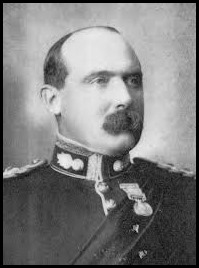 Once it became dark Lt.Col. Thorneycroft, at this time in
command ordered a retreat back to camp.
 Many of the Boers had by this
time also fallen back. At sunrise the following morning, the Boers found that
the British had retreated, and that only the dead and
wounded remained on the summit. The British had suffered a major setback.
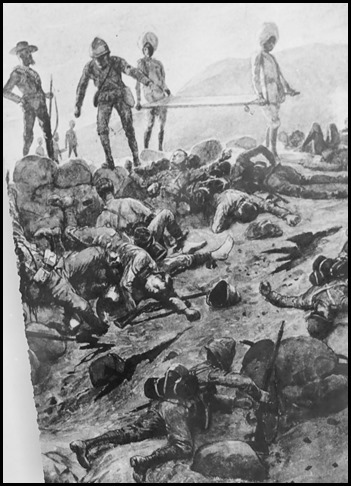 Indian stretcher
bearers on the summit after the battle.
On that day a cease-fire was
agreed so that the dead could be buried. The Boer line of defense was still
intact and Buller had once more failed to relieve Ladysmith.
Casualties. Boer killed – 68. Wounded - 134. British
killed – 343. Wounded – 563. Missing /Prisoner – 187.
One month later, on the 27th of
February 1900, Buller finally managed to break the Boer siege of Ladysmith,
which had lasted for four months.
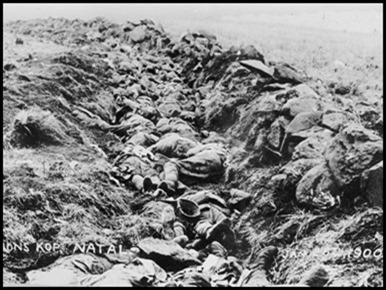 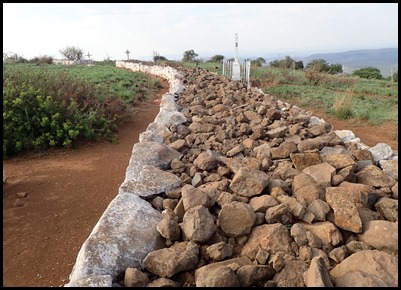 The British mass grave and as we saw it
today.
 Looking up from the curve of the hill.
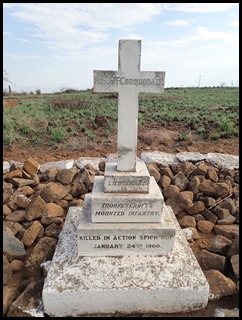 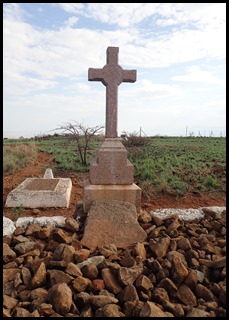  H.S.M. McCorquodale, unmarked
and Thomas Flower Flower-Ellis.
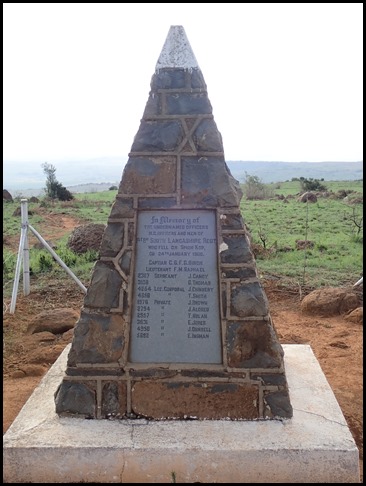 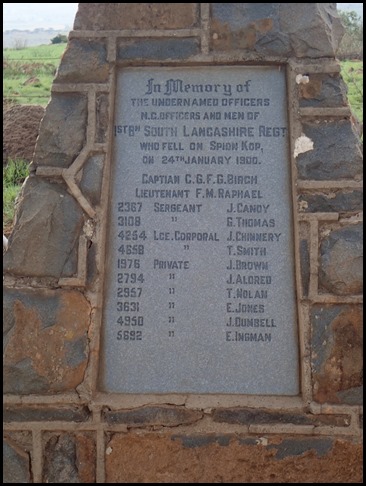 The fallen of the
Lancashire Regiment.
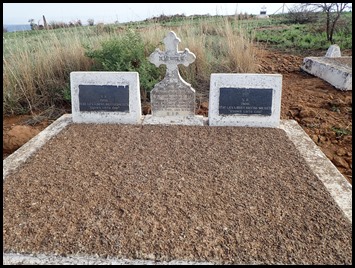 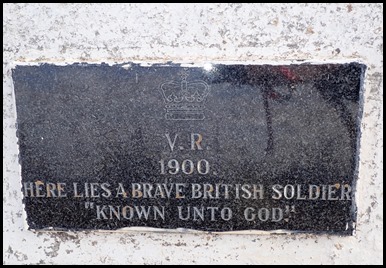 The Hon Nevill
Windsor Hill Trevor aged thirty-one has his headstone between two unknown soldiers.
 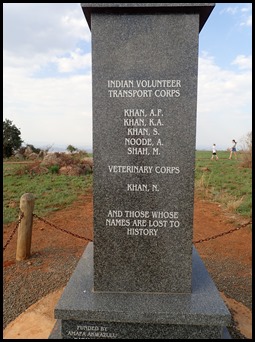 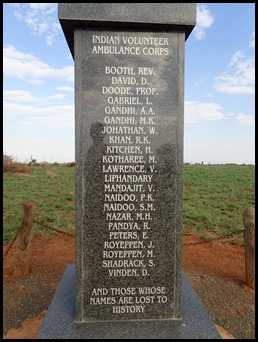 Memorial to the Indian stretcher bearers, the Indian Volunteer Transport Corps
and the Indian Volunteer Ambulance
Corps.
  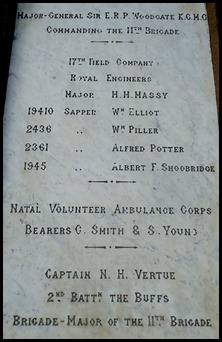   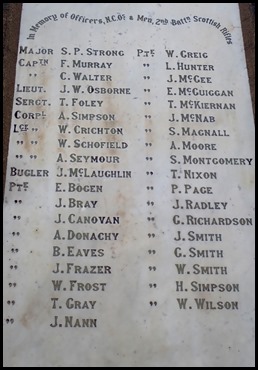  The largest of the
memorials to the British men lost.
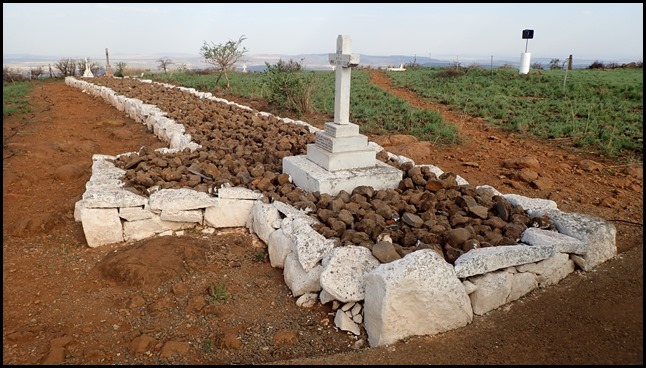 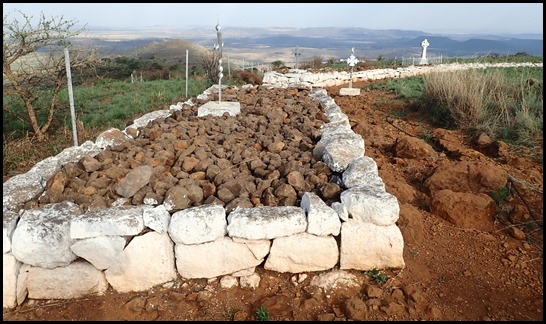 The far ends of
the massed grave by one of the breastworks.
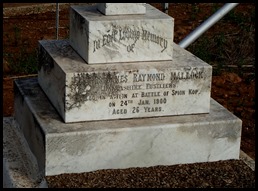 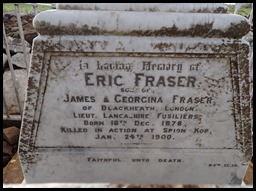 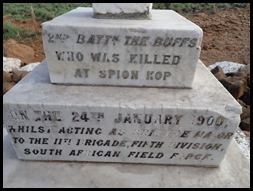 Lt. James
Maleock aged 26, Eric Fraser and 2nd Battalion Buffs (memorials along the massed
grave).
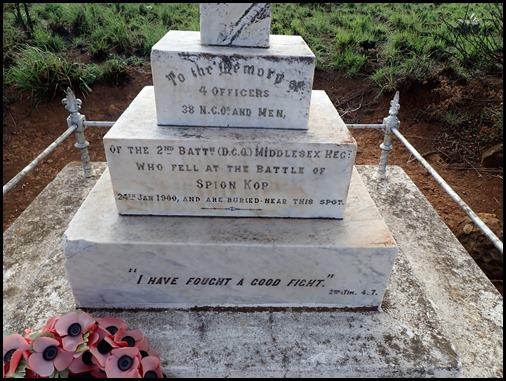 4 Officers and 38 NCO’s
from Middlesex.
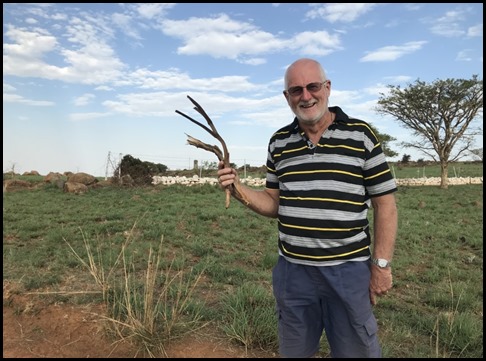 Bear posed with
some twigs for Joe. There was a story that a tree was carried back from
Spion Kop that became the crossbar at the kop end of the Liverpool football
ground – well as we can’t take a tree, the twigs are the nearest
thing.........
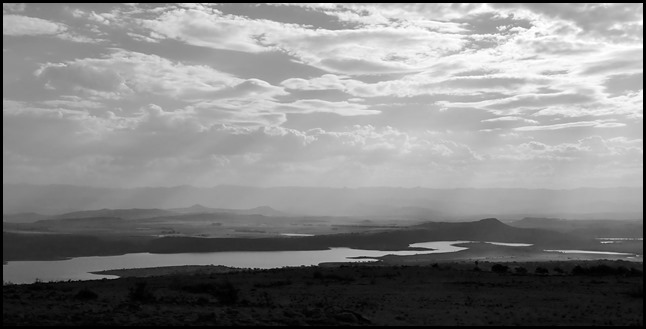  Haunting last
image begs the question – what it is all for ??? As
we said ‘farewell’ to the lovely man on the gate a few minutes to five, I
mentioned that it was Joe’s birthday – hence the visit. He rummaged around in a
cupboard in his gatehouse and came back to give me an actual bullet from the
battlefield. Wow.
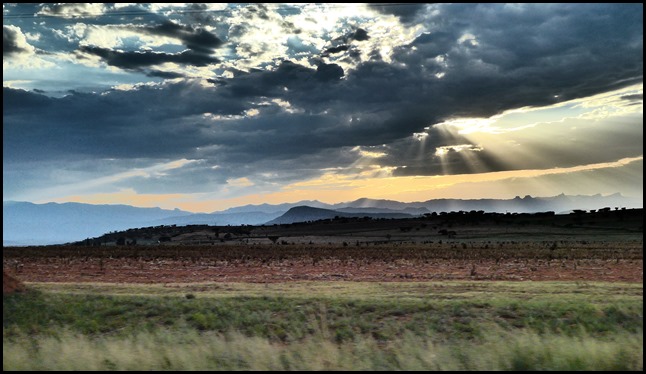 As we drove away Kimi took this
wonderful sky and scenic picture.
ALL IN ALL LADS SO FAR FROM
LIVERPOOL RIP
AN AMAZING
STORY |